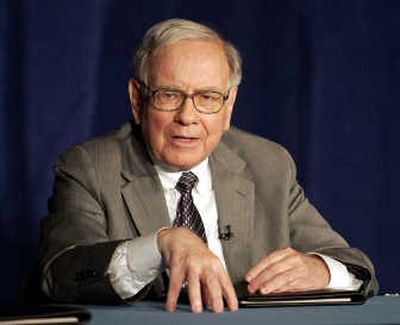Giving till it hurts

For 37 years, Nobuko Kajitani worked as a textile conservator at New York’s Metropolitan Museum of Art. She lived modestly, shunning restaurants, walking to work and recycling shopping bags and wrapping paper.
Kajitani retired in 2003. Two years later, she stunned Manhattan’s Asian Cultural Council by pledging a $1 million gift to the nonprofit arts group, which decades earlier had aided her textile-preservation work with $8,000 in grants. Her gift represents the bulk of the 72-year-old’s net worth.
Big gifts by big donors get the most attention. Led by Warren Buffett’s $31 billion pledge to the foundation of his friend Bill Gates, last year American billionaires and multimillionaires made 21 gifts of $100 million or more. While extraordinarily generous, most of these gifts hardly dented their donors’ lifestyles. But nonprofits say they are receiving an increasing number of “stretch” gifts, donations seemingly out of proportion to the givers’ resources. To the shock or chagrin of friends and family, these gifts often require donors to make sacrifices or at least live more modestly than their income would allow.
There have always been examples of exceptional gifts by supposedly ordinary people — such as Oseola McCarty, the elderly washerwoman who in 1995 gave $150,000 to the University of Southern Mississippi for scholarships. But now, according to nonprofits, such donors are getting younger, their gifts seem to be occurring more frequently and the dollars involved are growing exponentially.
CARE USA, the humanitarian relief group, now gets more than 10 gifts a year from donors who are “stretching,” up from around five annually a decade ago, said Deb Neuman, senior vice president of external relations. (CARE and other organizations say they categorize people as stretch givers based on financial discussions with them.) Such gifts to the American Baptist Foundation in Valley Forge, Pa., roughly doubled last year over the prior year, said foundation President John Jacobs. The United Way of Greater Kansas City received more than five stretch gifts last year, up from one or two a year four years ago, said Beth Burkes, vice president of major gifts and planned giving. “Years ago we didn’t see so much of this kind of thing, but that may be because we weren’t asking people to stretch so hard,” Burkes said. “Now we are more open to asking.”
People who follow philanthropy say donors like Kajitani set examples that extend far beyond the gifts they make, simply by causing those around them, including children, family members and friends, to at least reconsider how much they give and how they might feel if they gave more.
“Most people give what they can give without it affecting them,” said Jim Boeheim, head basketball coach at Syracuse. “I am probably very guilty of that myself. The significance of Joyce’s gift is that it is definitely something that she will feel the impact of.”
Academics who study wealth say more aging baby boomers are choosing charity to add meaning to their lives — and to get a buzz that lasts longer than the kick that comes from splurging on a designer watch or expensive car.
The changed rules about donating from IRAs provided by the Pension Protection Act of 2006 also helped. Over the last eight months, Save the Children has received half a dozen of what it calls “dramatically increased gifts” that it credits to the legislation, including $10,000 from a donor who had previously given an average of $1,000 annually.
Not all family members are thrilled by these stretch gifts, however. Neurosurgeon James Doty recently gave stock currently valued at about $28 million to charity — a gift that represents about 99 percent of his net worth. As a result, instead of retiring early Dr. Doty will have to save money to put his 3-year-old son, Sebastian, through college, and to fund retirement.
“I would have kept at least some of it for us,” said Doty’s wife, Masha Zhdanovich Doty. Though she sends money every month to relatives in the former Soviet Union — “I believe in charity, especially in helping people directly” — she wasn’t completely supportive of her husband’s giving. At ages 39 and 51 respectively, she and Doty need to plan carefully for the future of their young family, she said.